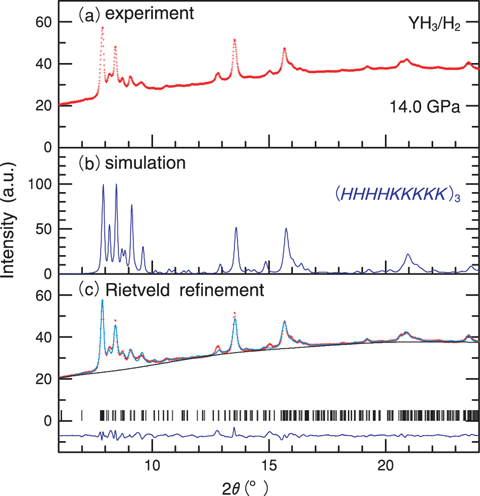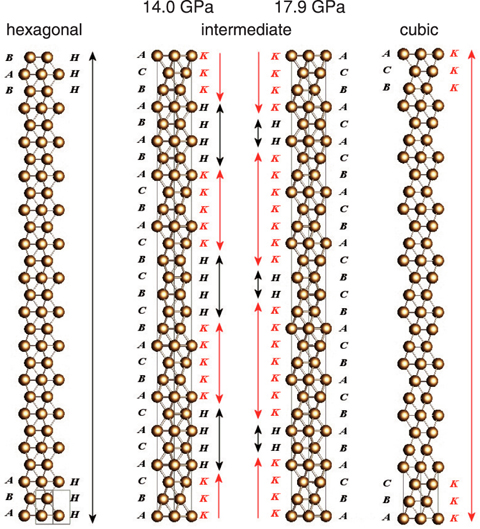
Fig.4-19 X-ray diffraction patterns of YH3

Fig.4-20 Pressure variation of metal lattices of YH3
Hydrogen (H) is the smallest, lightest and chemically active element. Hydrogen reacts with almost all metals and form hydrides, in which hydrogen atoms occupy the interstices of metal lattices. The interstitial H atoms form chemical bonds such as ionic or covalent-like bonds with the surrounding metal atoms and change the lattice structure and electronic state. Crystal structure and electronic state are changed by applying pressure as well. We have investigated the structure of yttrium trihydride (YH3 ) under high pressure. YH3 is an insulator, but was found to become a metal again upon compression beyond 20 GPa. The high-pressure structural study of YH3 would provide a clue to elucidate the insulator-metal transition in terms of the metal-H and/or H-H interactions.
The process of the pressure-induced hexagonal-cubic transition of YH3 was investigated by synchrotron radiation X-ray diffraction experiments at "SPring-8". The hexagonal structure gradually transformed into a cubic structure in a wide pressure span from 11 to 20 GPa, while the electronic state changed from insulating to metal. The intermediate state while in the above pressure range has been interpreted as the coexistence of the low-pressure hexagonal and high-pressure cubic phases. However, we have found that the intermediate state was a single phase and their diffraction patterns were well reproduced by models with long-period stacking structures of Y metal layers. Fig.4-19 shows (a) a measured high-resolution diffraction pattern, (b) a pattern simulated with a long-period model, and (c) the result of profile fitting analysis. The long-period structures consisted of Y-metal layers periodically arranged in ABA-type (H-type) and ABC-type (K-type) stacking sequence. The 14.0-GPa structure of a unit cell containing 27 layers was characterized as consisting of three sub unit cells, each having a 4-H and 5-K layer sequence, which were stacked up along the 3-fold axis. The17.9-GPa structure was described with the 27 layers as well but here the sub unit cells consisted of a 2-H and 7-K layer sequence (Fig.4-20). The K-type component increased in number gradually with increasing pressure, and eventually became the only type. Such structural transition does not occur in Y metal containing no H atoms. The interstitial H atoms likely played a dominant role in the formation of the long-period structures.